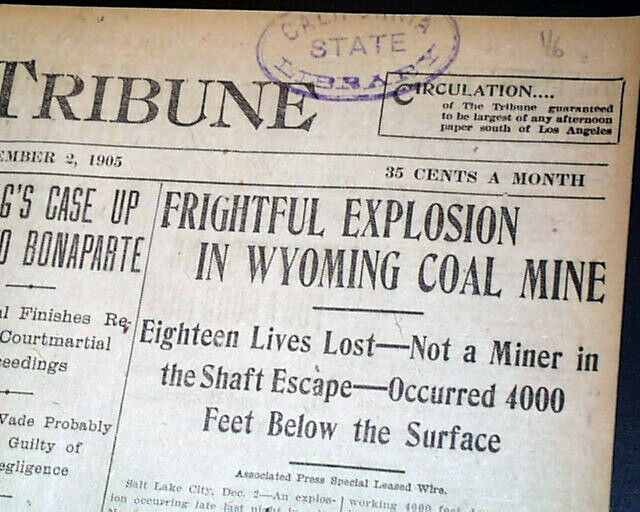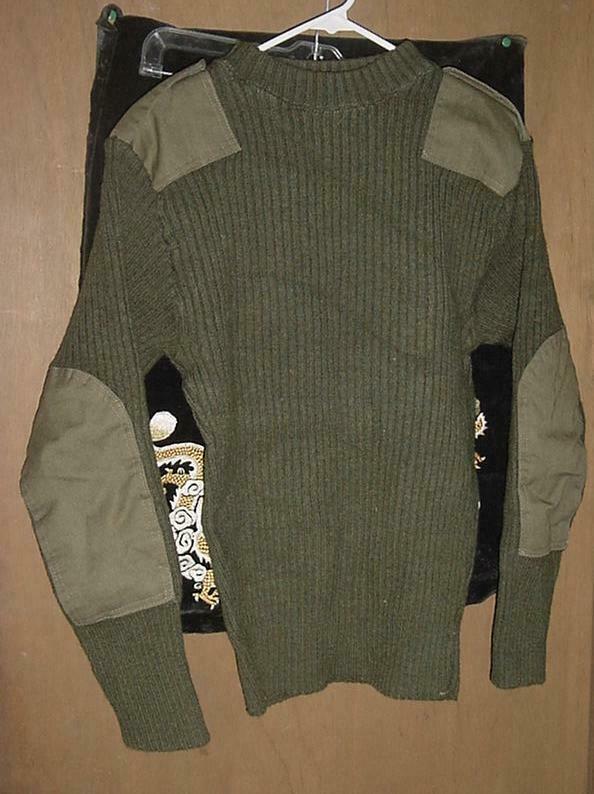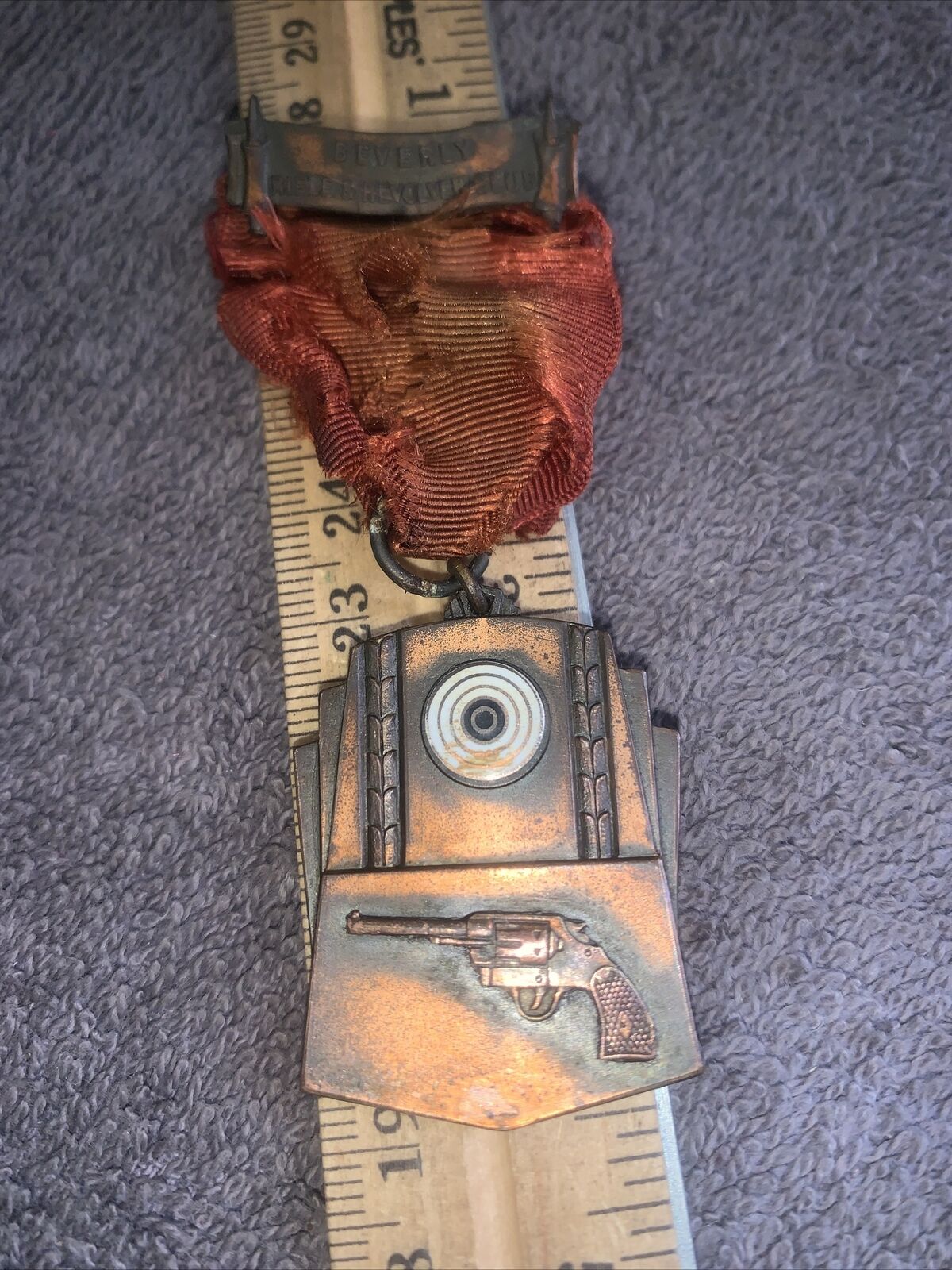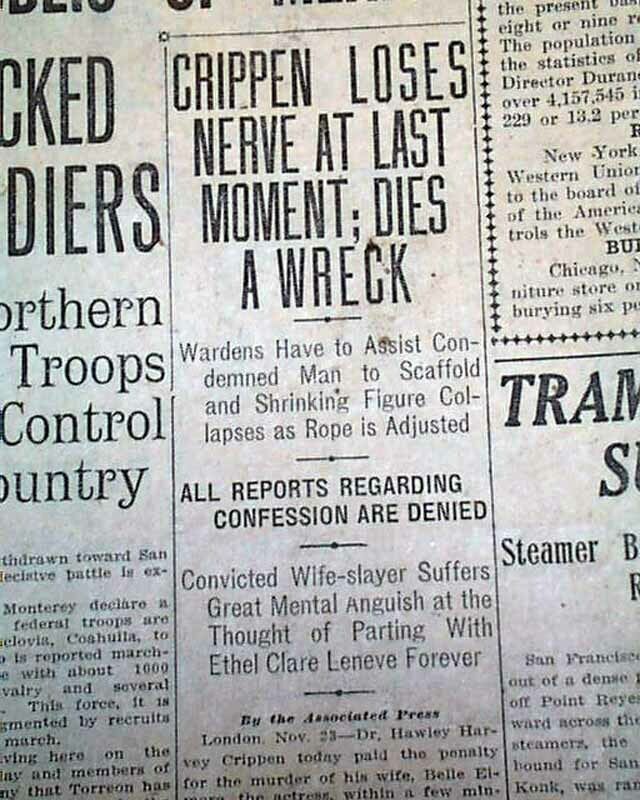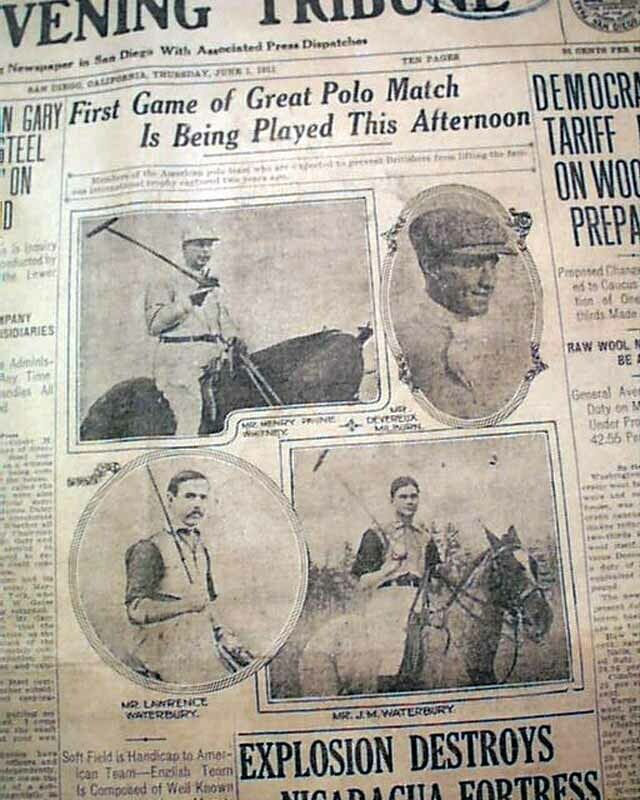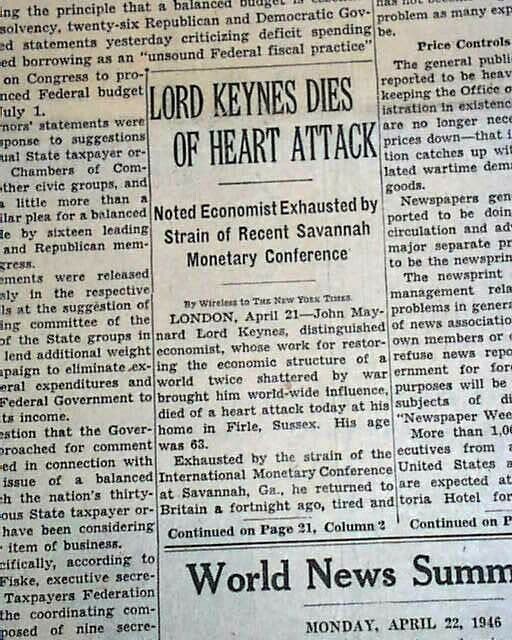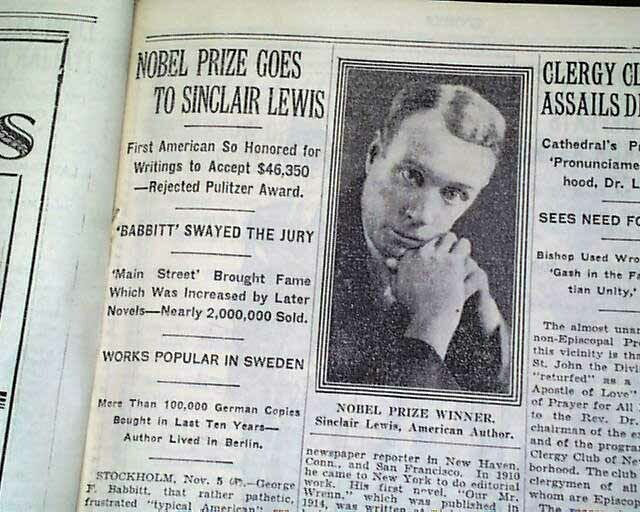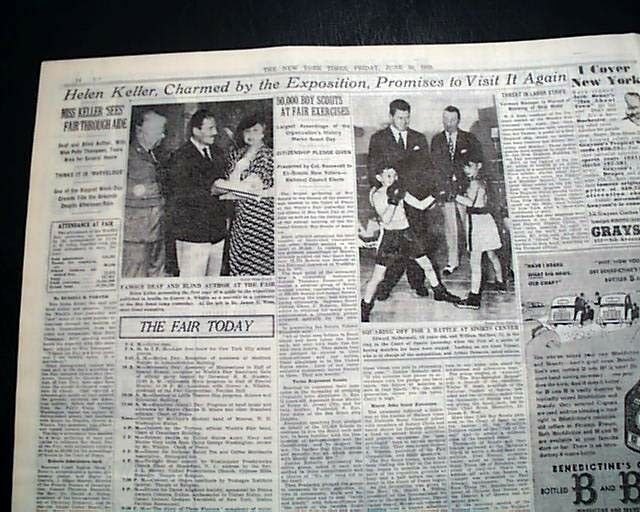-40%
1903 newspaper wFRONT PAGE description Pioneer ARIZONA TERRITORY William H Hardy
$ 15.83
- Description
- Size Guide
Description
1903 newspaper with a FRONT PAGE long and detailed description of early pioneer era ARIZONA from WILLIAM HARRISON HARDY, the first white settler in the area.-
inv # 5W-208
Please visit our EBAY STORE for THOUSANDS of HISTORICAL NEWSPAPERS on sale or at auction.
SEE PHOTO----- COMPLETE, ORIGINAL NEWSPAPER, the
Mohave County Miner
(KINGMAN, AZ) dated August 22, 1903 with EARLY ARIZONA history from an early settler! history from the area currently occupied by the tourism driven BULLHEAD CITY.
In March 1864 the current site of Bullhead City was the location of a settlement called Hardyville. It was named for early resident and politician, William Harrison Hardy. A New York native and an entrepreneur, Hardy established, with the support of George Alonzo Johnson's steamboat company, a ferry service and a steamboat landing where the Mojave Road crossed the Colorado River. He also built and owned the Hardyville - Prescott Road, a toll road from Hardyville to the new Arizona territorial capital of Prescott and raised Angora goats. He was a colorful and somewhat controversial figure. He was the town's first postmaster from January 17, 1865, and is credited with the invention of the riveted mail sack. He was also a Mohave County supervisor and a member of the Arizona Territorial Legislature. In 1864 his personal worth was over ,000, making him the second-richest man in Arizona.
From 1864 to 1883, steamboats made regular trips up the Colorado River from Port Isabel, Sonora and, after the arrival of the railroad from Yuma, Arizona, stopping at Hardyville regularly to deliver supplies to the mines of the surrounding mining districts and those to the east in the interior of Arizona and carry out their ore for processing and sale. These stern-wheeler riverboats played an important part in the early development of the areas bordering the Colorado River and Hardyville was considered the low water limit of navigation for the steamboats. Steamboat travel above that point to places in like El Dorado Canyon, Callville and later Rioville was possible only during the few months of the late spring to early summer flood caused by snow melt in the upper Colorado River watershed. Hardyville was the starting point for wagon roads and pack trails to the mines and other settlements in the upper region of the river. It was also the port for flatboats that ascended the river as far as Callville in the extreme low water time of the year.
In April 1866, Brevet Brigadier General James Fowler Rusling visited the settlement and described it:
Hardyville itself was then more of a name than place, consisting chiefly of a warehouse and quartz-mill, with a few adobe shanties. Near Hardyville, some ten or twenty miles away in the outlying mountains, there were several mines—gold, silver, and copper—of more or less richness, and the mill was located here to take advantage of the two great essentials, wood and water. The mill, however, was standing idle, like most enterprises in Arizona, and but little was doing in the mines.
Hardyville received a boost in 1867, when it became the county seat of Mohave County and the mills at Eldorado Canyon began operating stimulating trade up river again. Hardyville had a population of 20 in 1870. The 1870s saw a population boom in Hardyville as mining became more profitable. With the end of hostilities with the Native Americans in Mohave County, mines in the interior boomed again and the small town later grew with the addition of the construction of a general store, a saloon, a blacksmith shop, a billiard hall, and a respectable public hall.
However, in 1873, the county seat was moved to the mining boomtown of Cerbat. In 1877, the Southern Pacific Railroad arrived at Yuma. It bought out Johnson's Colorado Steam Navigation Company, and by 1878 had built rails into Maricopaville resulting in wagon traffic moving to that railhead that was closer to the mines in the northern interior than Hardyville. Traffic on the road to the interior mines of the east from Hardyville waned except for that to Cerbat, Mineral Park, and Chloride. In May 1881, Issac Polhamus, captain of one of the Southern Pacific-owned Colorado Steam Navigation Company steamboats, went into competition with Hardy for the trade to those mines establishing Polhamus Landing, a rival landing five miles up river, closer to the mines, taking away most of its river trade. Worse yet, the construction of the Atlantic and Pacific Railroad to its bridge crossing on the Colorado River near Needles, in May 1883, saw the remaining interior mining trade move away from the Colorado River and Hardyville.The Hardyville post office was discontinued in favor of the one in Mohave City on February 19, 1883.As the silver price declined in the late 1880s and early 1890s, the Hardyville mill, its only remaining economic resource, became idle and the remaining population of the town left, leaving it to become a ghost town.
Very good condition. This listing includes the complete entire original newspaper, NOT just a clipping or a page of it. STEPHEN A. GOLDMAN HISTORICAL NEWSPAPERS stands behind all of the items that we sell with a no questions asked, money back guarantee. Every item we sell is an original newspaper printed on the date indicated at the beginning of its description. U.S. buyers pay priority mail postage which includes waterproof plastic and a heavy cardboard flat to protect your purchase from damage in the mail. International postage is quoted when we are informed as to where the package is to be sent. We do combine postage (to reduce postage costs) for multiple purchases sent in the same package.
We list thousands of rare newspapers with dates from 1570 through 2004 on Ebay each week. This is truly SIX CENTURIES OF HISTORY that YOU CAN OWN!
Stephen A. Goldman Historical Newspapers has been in the business of buying and selling historical newspapers for over 45 years. Dr. Goldman is a consultant to the Freedom Forum Newseum and a member of the American Antiquarian Society. You can buy with confidence from us, knowing that we stand behind all of our historical items with a 100% money back guarantee. Let our 45+ years of experience work for YOU ! We have hundreds of thousands of historical newspapers (and their very early precursors) for sale.








